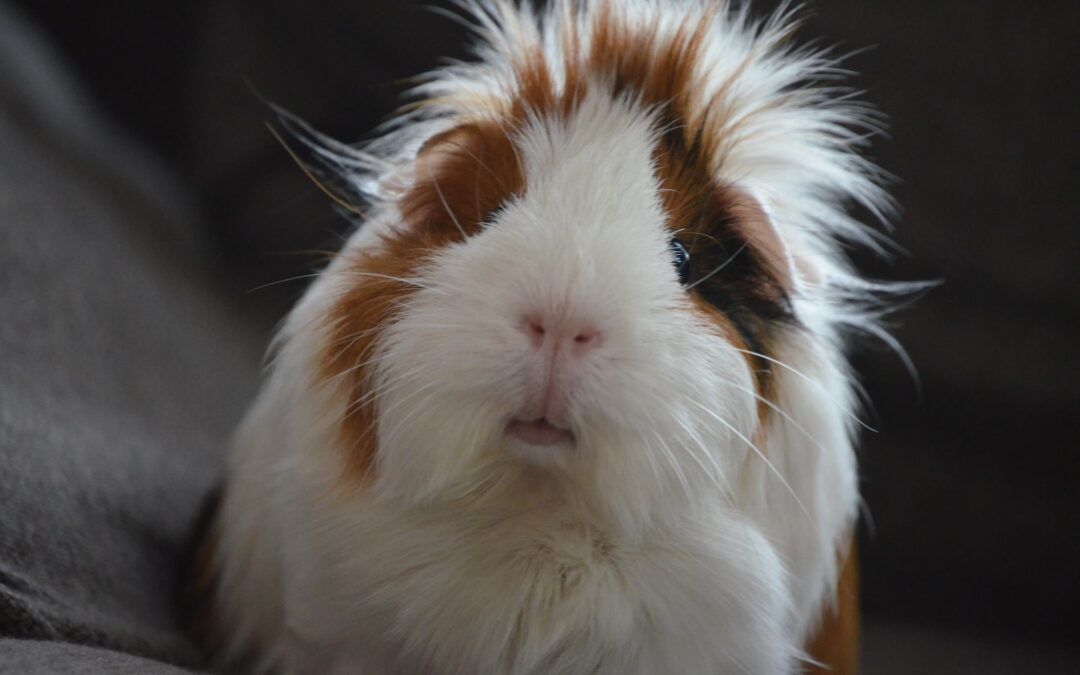Here at Homey Gnome Veterinary Clinic in Oakdale, MN, we pride ourselves on being a resource for people and any pet that slithers, flies, or walks through our doors!
March is Adopt a Rescued Guinea Pig Month, so we thought we’d share a little bit of information on how to take care of these special piggies.
Guinea pigs are delightful little animals with spunky personalities and fun vocalizations like chirping, wheeking, bubbling, purring, rumbling, and other noises they love to make! They are especially talkative while they are waiting for you to prepare their breakfast salad!
Diet
Speaking of salad, guinea pigs are herbivores, and they sure do have a big appetite! Hay, like timothy hay, for example, is the biggest component of their diet and is something they should have 24/7 access to.
They should also get high-quality commercial guinea pig pellets daily, usually only about ⅛ to ¼ cup per piggie. (Avoid any pellet brand containing nuts, seeds, corn, or colorful additives.) They love leafy greens and other vegetables and even some fruit for an occasional snack!
Guinea pigs can’t produce vitamin C on their own and need to consume it from their food to avoid getting scurvy, a disease caused by vitamin C deficiency. A quality guinea pig pellet food will likely have the appropriate amount of vitamin C for their daily diet. But you can also incorporate vitamin C in their diet by offering leafy greens like kale, mustard greens, collard greens, and even dandelion greens!
Housing
Guinea pigs have a surprising amount of energy and love to have plenty of room to run, jump, and play. They sure are fun to watch! The general recommendation for one guinea pig is that it should have a habitat with at least 30 by 36 inches in surface area, and of course, if space allows, more room is always preferable. More room is especially important if you adopt more than one guinea pig.
Also, note that guinea pigs need to have solid flooring. Wire flooring can hurt their little feet and easily lead to broken legs if their feet get stuck!
One of the most popular methods for housing guinea pigs today is by using a C&C cage, otherwise known as a cube and coroplast cage. You can build this yourself, or you can find premade kits online, too! By attaching cube-like grid panels to form a perimeter for the habitat and cutting some coroplast, a corrugated plastic sheet, to size, you can make an awesome set-up for your piggie.
Bedding
Guinea pigs can definitely be a bit messy, so you’ll want to invest in bedding that is easy to clean and safe for your guinea pig. One popular option is fleece cage liners (homemade or purchased) that can be shaken, washed, and reused.
Another option would be paper bedding in the form of pellets, confetti, or shredded paper. And finally, kiln-dried pine shavings or aspen shavings also work as bedding. The most important thing to note is that guinea pig bedding should have as little dust as possible, be made from natural materials, and be non-toxic.
Socialization and enrichment
Guinea pigs are highly sociable creatures and usually do best in pairs. Within their habitat, guinea pigs will need a hideout for each guinea pig, tunnels to crawl through, and chew toys.
It is also important that they get to spend some time outside of their cage each day. Guinea pig proof an area of your house so they can’t get into any trouble, and of course, supervise but enjoy watching them explore and play!
References
Image credit: Pexels


